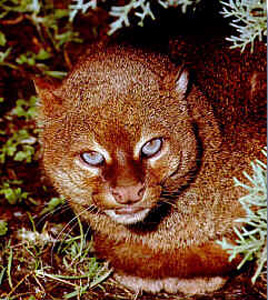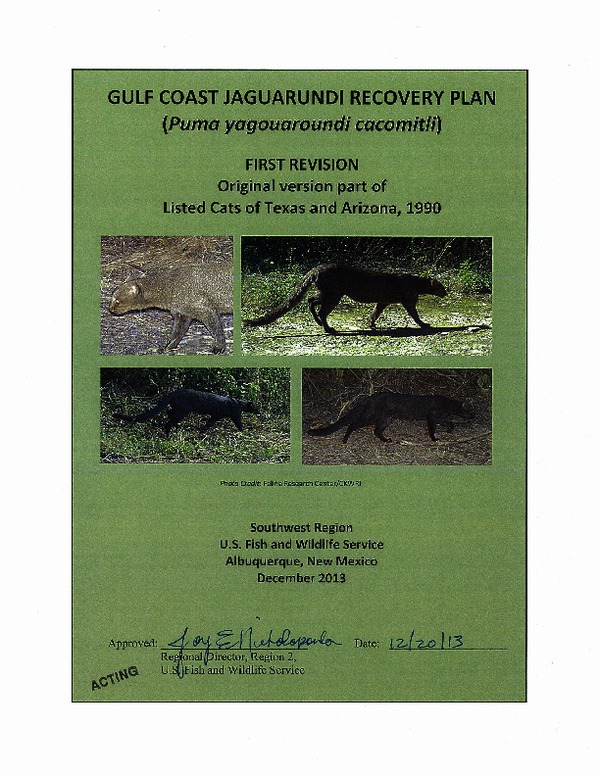From the Open-Publishing Calendar
From the Open-Publishing Newswire
Indybay Feature
Return of the Jaguarundis: Federal Plan Could Bring Small Endangered Cats Back to Texas
SILVER CITY, N.M.— A new federal recovery plan for Gulf Coast jaguarundis (see PDF) — rare and enigmatic felines slightly larger than house cats — calls for reintroducing them to south Texas, provided none can be found to still live there and other conditions are met. Jaguarundis, which have long necks, short legs and elongated tails, have been protected as an endangered species since 1976. The closest known population is 130 miles south of the border, in Mexico.

“Returning jaguarundis to the thickets and grasslands of the Rio Grande Valley to hunt for rodents and reptiles could help protect these fascinating and little-studied animals from extinction,” said Michael Robinson of the Center for Biological Diversity. “We sure hope the Fish and Wildlife Service will move forward with getting these beautiful cats back into the United States.”
The U.S. Fish and Wildlife Service recovery plan calls for ending Endangered Species Act protections for the Gulf Coast jaguarundis after there are 500 animals distributed among three populations with connectivity between them, which is important for genetic health.
Distribution and numbers of the Gulf Coast jaguarundi in its Mexican range are poorly understood. Border fencing poses a threat to future connectivity between jaguarundis in the United States and Mexico, but the recovery plan confirms there are locations on the border where wildlife can still cross.
Background
Gulf Coast jaguarundis (Puma yagouaroundi cacomitli) are often active during the day, allowing sightings of the black, brown or reddish unspotted slender cats with small, flattened heads. Jaguarundis appear to have disappeared from south Texas due to habitat loss to agriculture and residential development; the last known jaguarundi in the state died on a roadway in 1986. Restoration of habitats for ocelots, another endangered cat, has been underway in recent decades on national wildlife refuges in south Texas, and this restoration should help jaguarundis as well.
The Center for Biological Diversity is a national, nonprofit conservation organization with more than 625,000 members and online activists dedicated to the protection of endangered species and wild places.
Photo: USFWS
http://www.biologicaldiversity.org/news/press_releases/2014/gulf-coast-jaguarundi-01-10-2014.html
The U.S. Fish and Wildlife Service recovery plan calls for ending Endangered Species Act protections for the Gulf Coast jaguarundis after there are 500 animals distributed among three populations with connectivity between them, which is important for genetic health.
Distribution and numbers of the Gulf Coast jaguarundi in its Mexican range are poorly understood. Border fencing poses a threat to future connectivity between jaguarundis in the United States and Mexico, but the recovery plan confirms there are locations on the border where wildlife can still cross.
Background
Gulf Coast jaguarundis (Puma yagouaroundi cacomitli) are often active during the day, allowing sightings of the black, brown or reddish unspotted slender cats with small, flattened heads. Jaguarundis appear to have disappeared from south Texas due to habitat loss to agriculture and residential development; the last known jaguarundi in the state died on a roadway in 1986. Restoration of habitats for ocelots, another endangered cat, has been underway in recent decades on national wildlife refuges in south Texas, and this restoration should help jaguarundis as well.
The Center for Biological Diversity is a national, nonprofit conservation organization with more than 625,000 members and online activists dedicated to the protection of endangered species and wild places.
Photo: USFWS
http://www.biologicaldiversity.org/news/press_releases/2014/gulf-coast-jaguarundi-01-10-2014.html
Add Your Comments
We are 100% volunteer and depend on your participation to sustain our efforts!
Get Involved
If you'd like to help with maintaining or developing the website, contact us.
Publish
Publish your stories and upcoming events on Indybay.
Topics
More
Search Indybay's Archives
Advanced Search
►
▼
IMC Network



